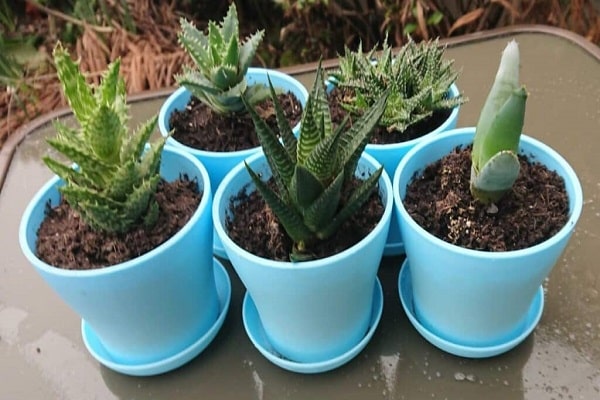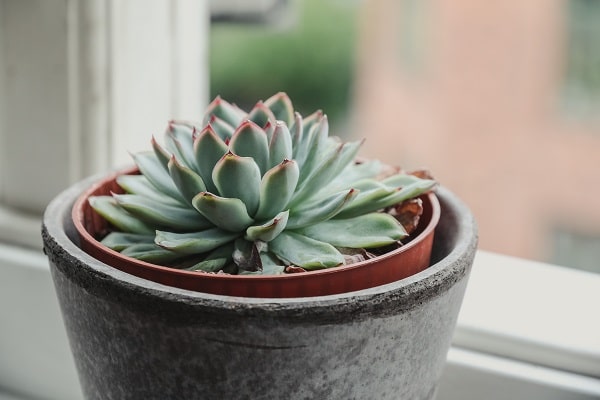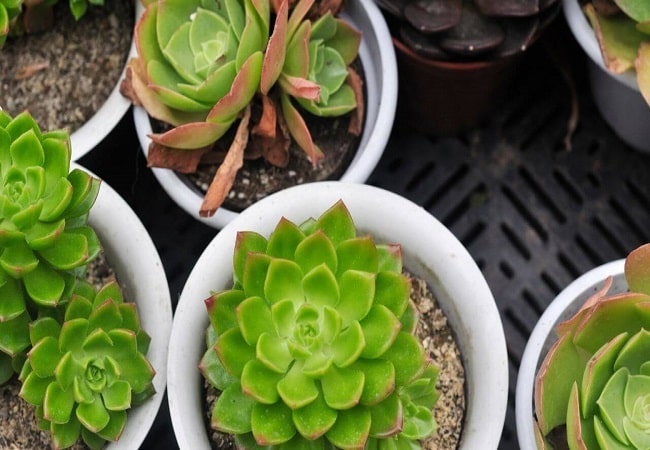Succulents are a type of plant that is known for their ability to store water. They are native to dry, arid environments and can be found in many different colors and shapes. Succulents are a popular choice for indoor plants because they are easy to care for and don’t require much water. But sometimes, even with the best care, succulents can die. If you’re wondering why did my succulent die, this blog post will show you some of the most common reasons. Keep reading to learn more!
Quick Navigation
- 1 Why Did My Succulent Die?
- 2 Your Succulent Is Getting Too Much Or Too Little Water
- 3 How Do You Revive A Dying Succulent?
- 4 Faq On Why Did My Succulent Die
- 4.1 Do Succulents Grow Back After They Die?
- 4.2 What Does A Dying Succulent Look Like?
- 4.3 Why Did My Succulent Shrivel Up And Die?
- 4.4 What Does An Overwatered Succulent Look Like?
- 4.5 Why Are My Indoor Succulents Dying?
- 4.6 Do Succulents Need Sunlight?
- 4.7 How Often Should Indoor Succulents Be Watered?
- 4.8 How Do You Fix Over Watered Succulents?
- 4.9 How Do I Know If My Succulent Roots Are Rotting?
- 4.10 Do Succulents Die Easily?
- 4.11 Why Are My Succulents Dying In The Winter?
- 4.12 Why Is My Succulent Turning Brown?
- 4.13 Do Succulents Like To Be Touched?
- 5 Conclusion
Why Did My Succulent Die?

Succulent plants can be a great addition to any home, but they can also be a little tricky. If you’re not careful, your succulent can die very quickly. Here are a few reasons why your succulent might have died and how to prevent it from happening again.
Your Succulent Is Getting Too Much Or Too Little Water

Succulents are drought-resistant plants that store water in their leaves, stems, or roots. They can survive for long periods without water but will eventually die if they don’t get any. Too much or too little water can both cause problems for succulents. If they get too much water, the roots will rot, and the plant will die. If they don’t get enough water, the leaves will start to shrivel, and the plant will also die. It’s important to find a balance when watering succulents and to make sure they’re getting the right amount of light and air.
Improper Soil and Drainage
Succulents are very sensitive to the quality of the soil they are grown in as well as the drainage. Improper soil and drainage can cause succulents to die. The most important thing to remember when growing succulents is to use well-draining soil. This means that the soil should not be too dense or too sandy. It should be somewhere in between. If the soil is too dense, it will not allow the water to drain properly, and the roots will rot. If the soil is too sandy, the water will drain too quickly, and the roots will not be able to absorb enough moisture.
Succulent Isn’t Getting Enough Light
If your succulent isn’t getting enough light, it can cause the plant to die. Succulents need bright, direct sunlight to grow and thrive. If your plant is not getting enough light, it will start to stretch out and become leggy. The leaves will also become pale and start to fall off and die. If you think your succulent isn’t getting enough light, move it to a brighter spot.
Low Humidity Levels
If the humidity levels are too low, succulents can start to experience stress, leading to them dying. Some signs that a plant is stressed from low humidity levels are leaves that are wrinkled or drooping, leaves that are turning brown or black, and new growth that is stunted. If you notice any of these signs, try increasing the humidity around your plant by misting it regularly or using a humidifier.
Too Much Fertilizer
If you use too much fertilizer on your succulents, it can cause them to die. The level of fertilizer in the soil can become too high and cause the succulents to burn. This can happen if you fertilize too often or if you use too much fertilizer when you do fertilize. Stop fertilizing and let the soil dry out if you think your succulents may have been over-fertilized. If the leaves of your succulents are yellow or brown, this is a sign of over-fertilization.
Pests and Disease
Pests and diseases are one of the most common causes of succulent death. Often, succulents will succumb to pests or diseases before they can fully mature and develop their defenses. Some of the most common pests and diseases include root rot, fungal infections, and scale insects.
Root rot is caused by a build-up of water in the soil, which can lead to the roots rotting and the plant dying. Fungal infections are often caused by too much moisture in the air or the soil and can cause the plant’s leaves to turn yellow or brown and eventually fall off. Scale insects are small insects that feed on the sap of the plant and can cause the leaves to turn yellow or brown and eventually die.
Root Rot
Root rot is a condition that causes succulent plants to die. It is caused by a fungus that attacks the plant’s roots, causing them to rot. This can be a problem in both indoor and outdoor succulent plants. If you suspect that your plant has root rot, you should remove it from the pot and inspect the roots. If they are brown and mushy, the plant has root rot and should be discarded.
How Do You Revive A Dying Succulent?

If your succulent is looking a bit wilted and sad, don’t despair! With a little bit of TLC, you can revive your plant and help it thrive once again. Here are a few tips on how to revive a dying succulent:
Check the roots: If the roots are mushy or black, the plant is beyond saving. However, if the roots are white or pale, the plant may need a little help.
Water: Succulents store water in their leaves, so if the leaves are looking a bit wrinkled, it’s a sign that the plant needs to be watered. Be sure to use a well-draining pot and only water the plant when the soil is dry to the touch.
Light: If your plant looks leggy or pale, it may be getting too much or not enough light. Move it to a spot where it will get bright, indirect light.
Fertilize: A weak or dying succulent will benefit from a little boost of nutrients. Use a succulent fertilizer and apply it according to the package directions.
With a little love and care, your succulent will be back to its healthy self in no time!
Faq On Why Did My Succulent Die
Do Succulents Grow Back After They Die?
Sucrose’s ability to regrow after death varies by species. Succulents may store water in their leaves and stems to survive without water or sunlight. Most succulents can regrow after death.
What Does A Dying Succulent Look Like?
A succulent is a type of plant that stores water in its leaves, stems, or roots. When a succulent is dying, it will lose its color and wilt. The leaves will become soft and floppy, and the stem will droop. If you touch the plant, the leaves and stem will feel wet.
Why Did My Succulent Shrivel Up And Die?
There are several reasons why a succulent might shrivel up and die. One possibility is that the plant was not getting enough water. Succulents need to be watered regularly, and if they are not, they will start to shrivel up and die. Another possibility is that the plant was not getting enough light. Succulents need a lot of light to grow, and if they are not getting enough light, they will start to shrivel up and die.
What Does An Overwatered Succulent Look Like?
An overwatered succulent can be recognized by its wilted and drooping leaves. The leaves may also be darker in color than usual, and the stem may be soft and mushy. If the plant is severely overwatered, it may begin to rot.
Why Are My Indoor Succulents Dying?
There could be several reasons why your indoor succulents are dying. One possibility is that they are not getting enough sunlight. Succulents need at least six hours of sunlight per day, and preferably more. Another possibility is that they are not getting enough water. Succulents need to be watered regularly but not overwatered. Overwatering can kill succulents quickly.
Do Succulents Need Sunlight?
Yes, succulents need sunlight. They can store water in their leaves and stems so that they can go for long periods without water. But they need plenty of light to do well.
How Often Should Indoor Succulents Be Watered?
Watering frequency for indoor succulents can vary based on several factors, including the size and type of succulent, the climate, and the amount of light the succulent receives. In general, most succulents should be watered about once a week. It’s important to avoid overwatering succulents, leading to root rot. If the soil feels dry, then it’s time to water your succulents.
How Do You Fix Over Watered Succulents?
Over-watered succulents can be fixed by slowly reducing the amount of water they are given until they are back to the recommended watering schedule. If the succulent is in a pot, carefully remove it from the pot and check the roots. If the roots are brown or mushy, the succulent is overwatered and needs to be fixed. If the roots are white and healthy, then the succulent was under-watered and also needed to be fixed.
How Do I Know If My Succulent Roots Are Rotting?
There are a few ways to tell if your succulent’s roots are rotting. One way is if the roots have turned black or white, which is an indication of rot. Another way is if the roots start to smell bad, which is another sign of rot. If the succulent isn’t growing very well either, that could signify that the roots are rotting.
Do Succulents Die Easily?
Succulents are plants that store water in their leaves, stems, or roots. They can survive in dry environments and die easily if they get too much water.
Why Are My Succulents Dying In The Winter?
Succulents die in the winter because they cannot survive in cold weather. When the temperature dips below 50 degrees Fahrenheit, the succulents’ cells start to freeze and eventually die.
Why Is My Succulent Turning Brown?
One potential reason for a succulent turning brown is overwatering. When a succulent is overwatered, the roots will rot, and the plant will eventually die. Another potential reason for a succulent turning brown is under-watering. When a succulent is underwatered, the plant will wilt, and the leaves will turn brown. A succulent may also turn brown if it is not getting enough sunlight.
Do Succulents Like To Be Touched?
The solution to this question depends on the succulent species. In general, succulents don’t enjoy being touched because they’re fragile. Because their leaves are covered in wax, they are readily scratched.
Conclusion
Succulents are a type of plant that is known for being low maintenance and hard to kill. However, there are several reasons why a succulent may die, including over-watering, under-watering, and poor sunlight exposure. If you have trouble keeping your succulents alive, consult a local garden center or online forum for more tips.

My name is Md Deloar Hossain and I’m the creator of Club Gardening, designed for all your gardening ideas, gardening product reviews, and a place to help you find the best gardening experience possible.


